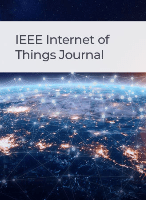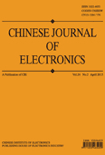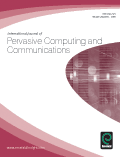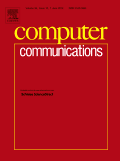
IEEE Internet of Things Journal
Scope & Guideline
Unlocking the Potential of the Internet of Things
Introduction
Aims and Scopes
- IoT Architecture and Frameworks:
Research on the design and implementation of scalable architectures for IoT systems, including edge computing, fog computing, and cloud integration. - Security and Privacy in IoT:
Studies addressing security challenges, privacy-preserving mechanisms, and trust management frameworks specifically tailored for IoT environments. - Resource Allocation and Management:
Optimization techniques for resource allocation in IoT networks, focusing on energy efficiency, latency minimization, and performance maximization. - Data Analytics and Machine Learning for IoT:
Application of machine learning and data analytics to enhance decision-making processes in IoT systems, including predictive maintenance and anomaly detection. - Wireless Communication Techniques:
Innovations in communication protocols and technologies (e.g., NOMA, LoRa, and massive MIMO) that facilitate reliable and efficient data transmission in IoT. - Smart Applications and Use Cases:
Explorations of practical IoT applications across various domains such as healthcare, transportation, environmental monitoring, and smart cities.
Trending and Emerging
- Federated Learning and Privacy Preservation:
A significant increase in research related to federated learning, emphasizing privacy-preserving techniques for IoT applications, showcasing a growing concern for data security and user privacy. - Integration of AI and Machine Learning:
A rising trend in the application of AI and machine learning techniques to optimize IoT operations, improve decision-making, and enhance predictive capabilities within smart environments. - Decentralized Systems and Blockchain:
Emerging interest in decentralized architectures, particularly blockchain, for enhancing security and trust in IoT applications, as well as for enabling new business models. - Environmental Monitoring and Sustainability:
An increasing focus on using IoT for environmental monitoring and sustainability efforts, indicating a growing awareness of ecological impacts and the role of technology in addressing climate change. - Smart Mobility Solutions:
Growing research on smart mobility solutions, including the integration of IoT with autonomous vehicles and intelligent transportation systems, reflecting the ongoing innovation in urban mobility.
Declining or Waning
- Traditional Sensing Technologies:
There is a noticeable decrease in publications focusing solely on traditional sensing technologies, such as basic IoT sensors, as attention shifts to more advanced and integrated solutions like AI-enhanced sensing. - Basic Data Management Systems:
Research centered on basic data management systems is declining as more sophisticated and decentralized approaches, including blockchain and edge computing, gain traction. - Single-Use IoT Applications:
The focus on single-use cases for IoT applications is waning in favor of multi-functional and adaptable solutions that can serve various needs and environments. - Low-Power Wireless Technologies:
Interest in low-power wireless technologies appears to be reducing as newer, more efficient communication methods are being developed, such as those leveraging advanced MIMO and RIS technologies. - Static Network Architectures:
Research on static network topologies is decreasing as dynamic and adaptive network models, which can better accommodate the evolving landscape of IoT applications, become more relevant.
Similar Journals

Journal of Grid Computing
Exploring the Future of High-Performance ComputingThe Journal of Grid Computing, published by Springer, stands as a pivotal resource in the dynamic field of computer science, particularly within the realms of Computer Networks and Communications, Hardware and Architecture, Information Systems, and Software. With an impressive Q1 ranking across these categories in 2023, the journal exemplifies excellence and rigor, catering to a diverse readership from researchers to industry professionals. Established in 2003, this esteemed journal is anchored in the Netherlands and releases cutting-edge research that reflects trends and advancements in grid computing technologies. Researchers can gain insights through its vast contributions, while institutions benefit from its prestigious standing within the SCOPUS framework, boasting high percentile ranks in multiple computer science categories. Though not open access, the journal provides unparalleled access options for institutional subscribers, solidifying its importance as a gateway to innovative discoveries in high-performance distributed computing.

International Journal of Networked and Distributed Computing
Unveiling the Future of Distributed IntelligenceWelcome to the International Journal of Networked and Distributed Computing, published by SpringerNature, a premier outlet for cutting-edge research in the realms of computer networks and distributed computing systems. Established as an Open Access journal since 2013 and based in the Netherlands, this publication strives to disseminate high-quality, peer-reviewed studies that address the complexities of contemporary computing challenges. With an impact factor that reflects its growing influence—positioned in the Q3 category for both Computer Networks and Communications and Computer Science Applications—this journal serves as a pivotal resource for scholars and practitioners aiming to advance knowledge and innovation in this rapidly evolving field. The journal encompasses diverse topics, from network protocols to distributed algorithms, ensuring that researchers, professionals, and students can find relevant insights and methodologies to inform their work. Join us in exploring the depths of networked and distributed computing, contributing to a collaborative academic environment that shapes the future of technology.

WIRELESS NETWORKS
Exploring the Future of Wireless ConnectivityWIRELESS NETWORKS is a prestigious journal published by Springer, focusing on cutting-edge research in the domains of wireless communication, computer networks, and information systems. Established in 1995 and set to converge its influential contributions until 2024, this journal has rapidly ascended to a Q2 category ranking in the fields of Computer Networks and Communications, Electrical and Electronic Engineering, and Information Systems, reflecting its significant role in advancing knowledge and innovation—ranked 75th, 151st, and 84th respectively in their fields by Scopus. Researchers and professionals alike value its contribution to the discourse on wireless technologies, making it a vital resource for professionals and students eager to stay abreast of the latest trends and findings. Although it does not offer open access, the insights gleaned from its articles are invaluable for tackling the challenges of modern communications and ensuring the efficient use of wireless networks.

International Journal of Grid and Utility Computing
Empowering Research in Utility Computing ApplicationsInternational Journal of Grid and Utility Computing is a pioneering publication dedicated to advancing research in the domains of grid computing, utility computing, and their applications across various sectors. Initiated in 2005 and continuing through 2024, the journal is published by INDERSCIENCE ENTERPRISES LTD, a respected publisher known for its commitment to facilitating scholarly communication. With an ISSN of 1741-847X and an E-ISSN of 1741-8488, this journal, based in the United Kingdom, serves a global audience of researchers, professionals, and students. Although classified in the Q4 category across Applied Mathematics, Computer Science Applications, and Management Information Systems, the journal aims to bridge theoretical research with practical implementation, fostering interdisciplinary collaborations. Researchers looking for a platform to disseminate their work on grid technology and its utility in modern computing environments will find this journal an invaluable resource. The focus on innovative computing methodologies places it at the forefront of emerging trends and technology applications, despite the need for increased visibility in competitive metrics like Scopus rankings.

CHINESE JOURNAL OF ELECTRONICS
Connecting Scholars with Cutting-edge Engineering DiscoveriesThe CHINESE JOURNAL OF ELECTRONICS is a distinguished peer-reviewed publication in the fields of electrical and electronic engineering and applied mathematics, published by the reputable IEEE-Institute of Electrical and Electronics Engineers Inc. Based in the United States, this journal has been a significant platform for sharing innovative research since its inception in 1996. With a commendable impact factor, it is ranked Q3 in both applied mathematics and electrical engineering categories, reflecting its relevance and quality within the academic community. The journal aims to disseminate high-quality research, foster interdisciplinary approaches, and provide a forum for discussions on advancements and applications in electronics and associated fields. Although it currently does not offer open access, the CHINESE JOURNAL OF ELECTRONICS remains a key resource for researchers, professionals, and students seeking to stay at the forefront of technological developments. Its Scopus rankings—170th in applied mathematics and 365th in electrical engineering—highlight its credibility and importance in advancing knowledge and innovation.

Internet Technology Letters
Connecting Academia and Industry Through Cutting-edge Research.Internet Technology Letters, published by John Wiley & Sons Ltd, is a dynamic and rapidly evolving journal that focuses on the innovative applications and developments within the realms of Artificial Intelligence, Computer Networks and Communications, Information Systems, and Software. With its E-ISSN 2476-1508 and a defined convergence period from 2018 to 2024, this journal seeks to address emerging trends and critical challenges confronting the digital landscape today. Recognized in the Q3 quartile range across multiple computer science categories in 2023, it serves as a valuable resource for researchers, professionals, and students seeking to advance their knowledge and stay updated on significant technological advancements. While currently not an open-access journal, Internet Technology Letters holds a prominent position on platforms like Scopus, ranked within the middle percentiles, reflecting its contribution to the academic community. The journal aims to foster connectivity between academia and industry, encouraging submissions that promote interdisciplinary collaboration and innovation. By creating a platform for sharing groundbreaking research, Internet Technology Letters plays a crucial role in shaping future technological landscapes.

International Journal of Pervasive Computing and Communications
Advancing connectivity through innovative research.The International Journal of Pervasive Computing and Communications, published by EMERALD GROUP PUBLISHING LTD, is a leading academic journal dedicated to advancing the field of pervasive computing and communications. With an ISSN of 1742-7371 and an E-ISSN of 1742-738X, this journal serves as a premier platform for researchers, professionals, and students to explore innovative applications and technologies that enhance connectivity and computing experiences. Operating from the United Kingdom, the journal has consistently maintained a strong impact within the academic community, achieving impressive Scopus rankings, including a Q2 status in Computer Science (miscellaneous) and Q3 in Theoretical Computer Science, as of 2023. The journal encompasses a broad scope, encouraging papers that discuss interdisciplinary approaches and novel methodologies in computing. By sharing cutting-edge research, the International Journal of Pervasive Computing and Communications plays a vital role in shaping the discourse surrounding pervasive technologies and their societal impacts, making it an essential resource for those looking to remain at the forefront of this dynamic field.

Annals of Telecommunications
Empowering researchers to shape the future of communication.Annals of Telecommunications is a prestigious peer-reviewed journal published by SPRINGER INT PUBL AG, dedicated to advancing the field of electrical and electronic engineering. Established in 1946, this journal presents a comprehensive collection of research articles that address the latest trends and developments in telecommunications, including innovative technologies, systems, and applications. With an impressive Q2 ranking in the 2023 category of Electrical and Electronic Engineering and a Scopus rank in the 68th percentile, the journal serves as a vital platform for researchers, professionals, and students looking to disseminate groundbreaking findings and engage with contemporary challenges in the field. Although it is not an Open Access journal, it offers a wealth of knowledge that contributes to both academic and practical advancements in telecommunications. The Annals of Telecommunications remains an essential resource for anyone involved in telecommunication research and practice, fostering collaboration and knowledge exchange globally.

COMPUTER COMMUNICATIONS
Elevating Knowledge in Computer CommunicationsCOMPUTER COMMUNICATIONS is a premier journal published by Elsevier, covering cutting-edge research in the field of computer networks and communications. With an impressive 2023 Scopus ranking placing it in the 95th percentile and classified as Q1 in its category, this journal embodies the forefront of technological advancement and scholarly excellence. Since its inception in 1978 and poised to continue until 2024, COMPUTER COMMUNICATIONS serves as an essential platform for disseminating high-impact research that advances our understanding of computer networking protocols, architectures, and applications. Although it is not an open-access publication, the journal provides various access options to ensure that its findings are widely circulated among researchers, professionals, and students. Through rigorous peer review and a commitment to fostering innovation, COMPUTER COMMUNICATIONS plays a vital role in shaping the future of communication technologies.

International Arab Journal of Information Technology
Fostering Innovation Across Arab Tech LandscapesWelcome to the International Arab Journal of Information Technology, a prestigious publication under the aegis of ZARKA PRIVATE UNIVERSITY in Jordan, dedicated to advancing the field of Information Technology. First established in 2008, this journal has made significant strides in disseminating high-quality research, achieving an impressive Q2 ranking in Computer Science (miscellaneous) and securing a notable 57th percentile position in the Scopus rankings. With a comprehensive scope encompassing various sub-disciplines of computer science, the journal is committed to promoting scholarly dialogue and innovation among researchers, professionals, and students. While currently operating as a subscription-only journal, it remains a vital resource for the academic community seeking to explore the latest trends and advancements in technology. The International Arab Journal of Information Technology is not only a platform for original research but also a vibrant hub for ideas that shape the technological landscape of the Arab region and beyond.